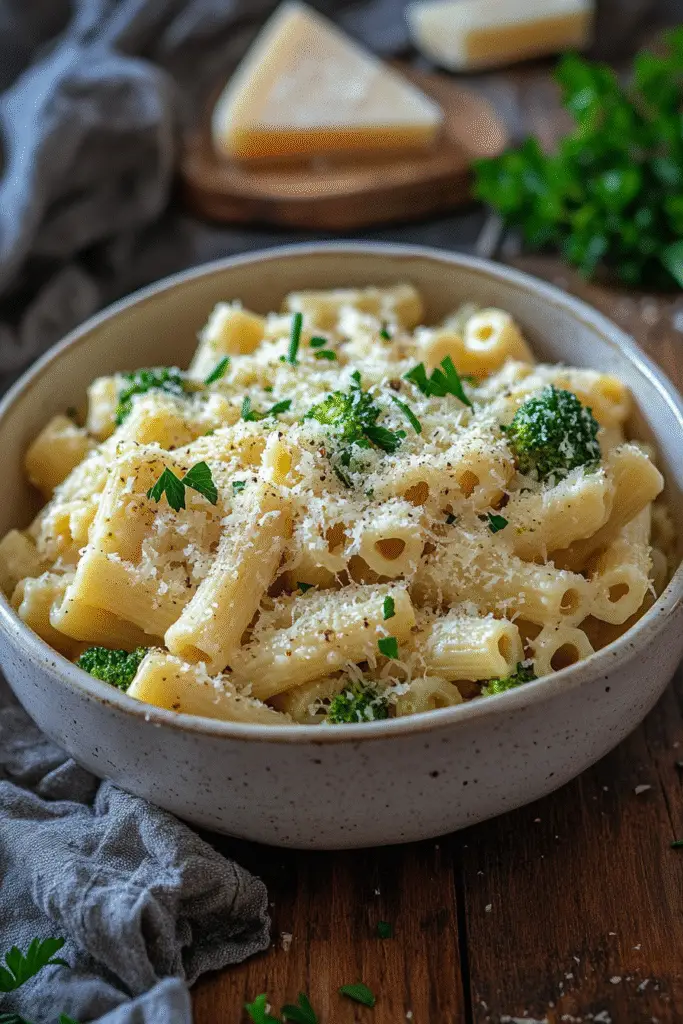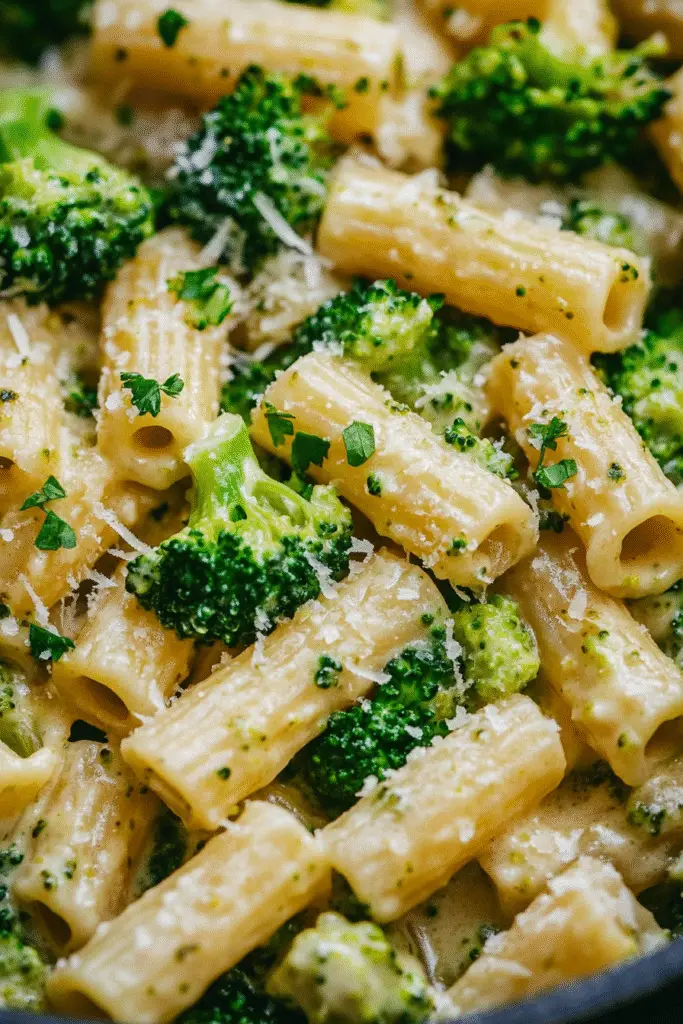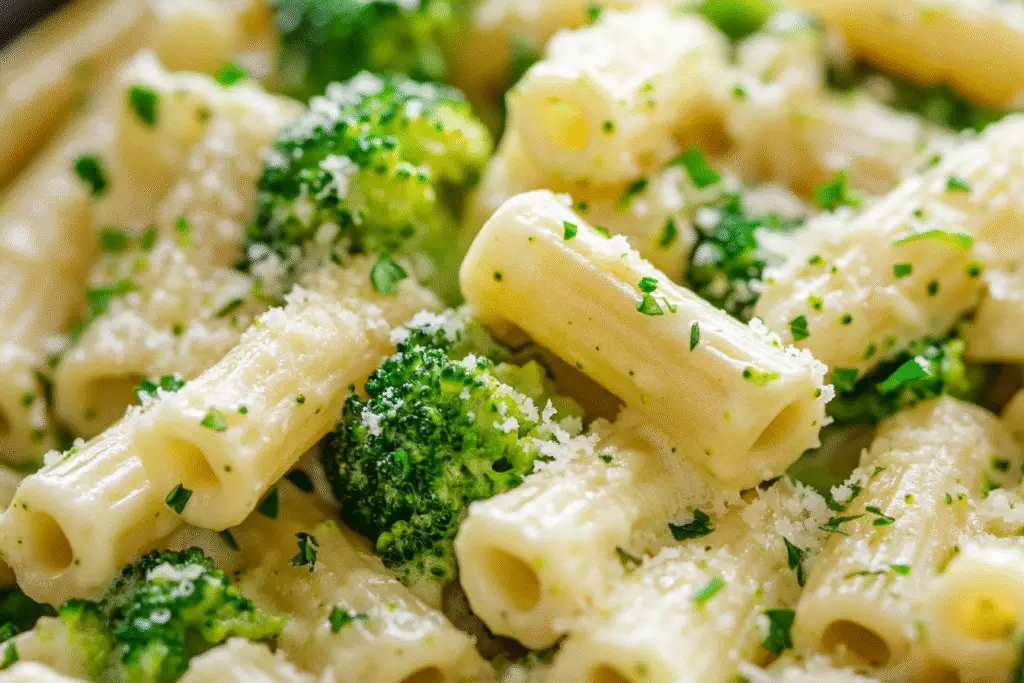One Pot Broccoli Pasta is the kind of meal that checks all the boxes: it’s fast, comforting, packed with vegetables, and uses minimal cleanup. In just one pot, you can create tender pasta coated in a velvety sauce, paired with perfectly cooked broccoli that holds its bite. The secret to this dish is the starchy pasta water, which naturally thickens the sauce and brings everything together without needing heavy cream or complicated steps.
Perfect for busy weeknights, easy lunches, or quick vegetarian dinners, this dish is endlessly adaptable. Whether you prefer a garlicky, olive oil-based version, a creamy cheese sauce, or a lemony twist, you can customize this pasta to your taste. In this detailed guide, I’ll walk you through how to make the perfect one pot broccoli pasta—from choosing the right pasta shape and balancing flavors to troubleshooting common pitfalls and exploring delicious variations.
Why One Pot Broccoli Pasta Works: Creamy Texture, Balanced Flavors, and Minimal Cleanup
The beauty of this dish lies in its simplicity and clever use of pasta water to create a naturally thickened sauce.
Key Flavor Elements:
- Tender pasta and crisp-tender broccoli: Cooked together for ultimate convenience.
- Garlic and Parmesan: Provide richness and umami.
- Olive oil or butter: Coats the pasta and carries the flavors.
- Starchy cooking water: Creates a silky, lightly creamy sauce without adding cream.
Every forkful is balanced—comforting but fresh, hearty but not heavy.

Choosing the Right Pasta: Shape and Cooking Time Matter
Best Pasta Choices:
- Short pasta: Penne, fusilli, rotini, or farfalle cling to the sauce and hold broccoli pieces well.
- Long pasta: Spaghetti or linguine can work, but you’ll need to stir more often to prevent sticking.
Key Tip:
Pick a pasta with a cooking time of about 8–10 minutes so it aligns well with the broccoli’s cooking time.
Choosing the Right Broccoli: Fresh or Frozen?
Best Option:
- Fresh broccoli florets: Retain texture and bright color.
Can You Use Frozen?
- Yes, but add it later in the cooking process to avoid mushy broccoli.
Preparation Tip:
Cut broccoli florets into small, bite-sized pieces so they cook at the same pace as the pasta.

Building Flavor: Aromatics and Cheese
Essential Flavor Boosters:
- Garlic
- Olive oil or butter
- Parmesan or Pecorino Romano
Optional Add-Ins:
- Lemon zest or juice for brightness
- Red pepper flakes for heat
- Fresh herbs like basil or parsley
Recommended Equipment
You’ll need:
- Large pot or deep skillet with lid: Big enough to hold pasta, broccoli, and water.
- Wooden spoon or tongs: For stirring and serving.
Optional: Microplane for grating fresh Parmesan and zesting lemon.
Common Mistakes and How to Avoid Them
1. Overcooked Broccoli
- Happens if broccoli is added too early.
- Solution: Add broccoli partway through pasta cooking so it finishes just as the pasta does.
2. Sticky Pasta
- Can happen if not stirred occasionally.
- Solution: Stir frequently to prevent sticking and ensure even cooking.
3. Thin Sauce
- Happens if not enough starch is released.
- Solution: Simmer uncovered for a few minutes to reduce liquid, or mash a few broccoli pieces into the sauce to thicken.
4. Underseasoned Dish
- Common in one-pot meals.
- Solution: Salt pasta water generously and adjust seasoning at the end.
Preparation and Meal Planning Tips
Time-Saving Prep:
- Use pre-cut broccoli florets.
- Measure out pasta, cheese, and seasonings before you start.
Make-Ahead Tips:
- The dish is best fresh but can be stored and reheated with a splash of water or broth to refresh the sauce.
Meal Prep:
- Perfect for packing into lunch containers—just reheat with a little extra olive oil or Parmesan.

Flavor Variations and Customizations
Protein Additions:
- Grilled or shredded chicken
- Crispy bacon or pancetta
- Chickpeas for a vegetarian protein boost
Sauce Variations:
- Add a splash of cream or cream cheese for extra richness.
- Use pesto instead of Parmesan for an herby twist.
Spice Adjustments:
- Add more red pepper flakes or chili oil for heat.
- Use black pepper and lemon for a bright, mild version.
Vegan Option:
- Use plant-based Parmesan and olive oil.
- Stir in nutritional yeast for a cheesy flavor.
Ingredient List
For the Pasta:
- 12 ounces (340 g) short pasta (penne, rotini, fusilli)
- 4 cups (about 300 g) fresh broccoli florets, cut into bite-sized pieces
- 4 cloves garlic, minced
- 4 cups (960 ml) water or low-sodium vegetable broth
- 1 tablespoon olive oil or unsalted butter
- ½ teaspoon red pepper flakes (optional)
- ¾ cup (75 g) freshly grated Parmesan cheese
- Salt and black pepper to taste
- Optional: Zest and juice of 1 lemon for brightness
Step-By-Step Instructions
1. Sauté Garlic
In a large pot or deep skillet, heat olive oil over medium heat.
Add minced garlic and sauté for 30 seconds until fragrant. Do not let garlic brown.
2. Add Pasta and Liquid
Add pasta, 4 cups water or broth, a generous pinch of salt, and red pepper flakes.
Bring to a boil, stirring occasionally to prevent sticking.
3. Add Broccoli
After pasta has cooked for about 4–5 minutes, stir in broccoli florets.
Continue simmering, stirring regularly, until pasta is al dente and most of the liquid is absorbed (about 4–5 more minutes).
4. Build the Sauce
Remove from heat.
Stir in Parmesan cheese until melted and the sauce thickens.
If the sauce is too thick, add a splash of warm water or broth.
If desired, add lemon zest and juice for extra brightness.
Taste and adjust seasoning with salt and pepper.
5. Serve
Serve hot, garnished with extra Parmesan, fresh parsley, or a drizzle of olive oil.
Pair with crusty bread or a fresh green salad for a complete meal.
Troubleshooting and FAQs
What if my pasta absorbs all the liquid but is still undercooked?
Add hot water or broth, ¼ cup at a time, and continue cooking until pasta is tender.
How do I keep the broccoli green and vibrant?
Don’t overcook it. Adding broccoli in the last 4–5 minutes ensures it stays crisp-tender and bright.
Can I use gluten-free pasta?
Yes, but monitor closely as gluten-free pasta can absorb liquid differently and may cook faster.
Can I add cream or milk?
Absolutely. A splash of cream or a dollop of cream cheese can make the sauce extra luscious.
Variations: Classic, Creamy, and Vegan Versions
| Version | Sauce | Protein | Flavor Notes |
|---|---|---|---|
| Classic | Garlic, Parmesan, olive oil | None | Light, savory, balanced |
| Creamy | Garlic, Parmesan, splash of cream | Chicken or bacon | Rich, indulgent |
| Vegan | Olive oil, nutritional yeast | Chickpeas | Light, plant-based |
Storage and Reheating Tips
- Storage: Store leftovers in an airtight container in the fridge for up to 4 days.
- Reheating: Reheat gently on the stovetop or in the microwave with a splash of water or broth to loosen the sauce.
- Freezing: Not recommended; pasta and broccoli may become mushy after thawing.
Final Thoughts
One Pot Broccoli Pasta is a perfect example of how you can create a creamy, flavorful dish with just a few ingredients and one pot. It’s quick, flexible, and perfect for busy nights when you need something satisfying but don’t want a sink full of dishes.
Whether you keep it classic with garlic and Parmesan, make it creamy, or try a plant-based version, this dish is endlessly adaptable. I hope this step-by-step guide helps you make your ideal One Pot Broccoli Pasta—feel free to experiment with proteins, spices, or herbs to make it your own!
